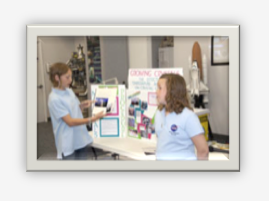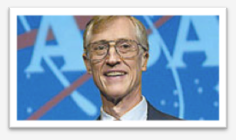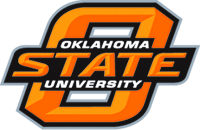Link to the NES Virtual Campus home page.
Tag: NES Project Update
One Month Left to Re-enroll in NES
 Only one month is left for current NASA Explorer Schools participants to submit their online enrollment forms for the 2011-2012 school year before NES closes for summer recess. You don’t want to miss out on engaging classroom resources from NES, including 20 new classroom modules, student engagement opportunities with NASA scientists and engineers, and exclusive recognition opportunities that NES will offer next year.
Only one month is left for current NASA Explorer Schools participants to submit their online enrollment forms for the 2011-2012 school year before NES closes for summer recess. You don’t want to miss out on engaging classroom resources from NES, including 20 new classroom modules, student engagement opportunities with NASA scientists and engineers, and exclusive recognition opportunities that NES will offer next year.
NASA Explorer Schools Enrollment for the 2011-2012 Year is Now Open!
 If you are an NES participant in the 2010-2011 school year, you can now register for the upcoming school year. When logging onto the Virtual Campus, you will receive a prompt to fill out a brief enrollment form where you can make updates to personal, classroom or school information.
If you are an NES participant in the 2010-2011 school year, you can now register for the upcoming school year. When logging onto the Virtual Campus, you will receive a prompt to fill out a brief enrollment form where you can make updates to personal, classroom or school information.Link to the NES Virtual Campus home page.
NASA Explorer Schools Dare Students to Dream
 Inspiring the next generation of explorers, scientists, engineers and educators to “dream big” was the goal of this year’s NASA Explorer Schools National Student Symposium at Kennedy Space Center in Florida.
Inspiring the next generation of explorers, scientists, engineers and educators to “dream big” was the goal of this year’s NASA Explorer Schools National Student Symposium at Kennedy Space Center in Florida. Link to the NES Virtual Campus home page.
NES National Student Symposium Showcases Student Research
Students from across the nation will gather at NASA’s Kennedy Space Center in Florida May 4-7 for the NASA Explorer Schools National Student Symposium. Future leaders in science, technology, education and math, or STEM, will present their work to NASA scientists, engineers, fellow students and educators.
The competitively selected group of fourth through 12th-graders consists of 58 students and their teachers. The various student research projects were designed to improve learning and bolster interest in STEM disciplines.
The students were required to complete an original investigation focused on existing NASA missions or research interests. Students presented their work to experts at virtual regional symposia held January through March at NASA centers using the agency’s Digital Learning Network.
In addition to presenting their work at the national symposium, participants also will learn more about NASA’s research activities and exploration missions. Students will tour a variety of operational facilities at Kennedy, including the space shuttle launch complex, and participate in a webcase of a career panel featuring NASA scientists, engineers and specialists.
Congratulations to the students and schools attending the National Student Symposium:
|
|
|
|
|
|
|
|
|
|
|
|
|
|
|
|
|
|
|
|
|
|
|
|
|
|
|
|
|
|
|
|
|
|
|
|
|
|
|
|
|
|
|
|
|
|
|
|
|
|
|
|
|
|
|
|
|
|
|
|
|
|
|
|
|
|
|
|
|
|
|
|
|
|
|
|
|
|
|
|
|
|
|
|
|
|
|
|
|
|
|
|
|
|
|
|
|
|
NES Gearing Up for the 2011-2012 School Year
NASA Explorer Schools will begin re-enrollment for the upcoming school year beginning on May 2. By re-enrolling, you will have continued access to engaging and exciting classroom materials from NES, including 20 new product modules for 2011-2012, and a fresh collection of NASA Now and live chat events planned for the coming school year.
High School Students of Registered NES Teachers Invited to Submit Questions to Nobel Prize Winner
This is anexclusive invitation just for participating NASA Explorer Schools high schoolteachers.

Are your students boggled by the big bang theory? Are they captivated by cosmic background radiation? Are they fascinated by the formation of planets, stars and galaxies? Then May’s NES online video chat is their chance to have their questions answered. Dr. John C. Mather, Senior Project Scientist for the James Webb Space Telescope and 2006 Nobel Prize winner in physics for his work on the big bang theory, will be answering student questions during a live video chat.
Thehour-long chat will be on Tuesday, May 17, beginning at 1:30 p.m. EDT.
Teachersare invited to send up to 10 student questions to Mather through either digitalvideo or email. Video questions will be given priority.
Submitting a Question (The deadlinefor submitting questions is May 1):
Allquestions must include:
- The student’s FIRST NAME only
- Grade/subject
- School name
- The question
For example, “My name is Sara and I’m a 10th-grade astronomystudent at Johnson High School. My question is…”
- Request a blank media release form from nasa-explorer-schools@mail.nasa.gov. A completed NES media release form must be submitted for each student featured in a video. Media release forms must be faxed to 216-433-5924 or scanned and sent to nasa-explorer-schools@mail.nasa.gov with the subject “Media Release for Dr. Mather Chat.”
- One student question per file and 10 questions per teacher may be submitted.
- To improve the chances of your video being selected, review the “Camera Techniques” list at the bottom of this message.
- All submitted video files will be destroyed at the conclusion of the video chat. Questions asked during the chat will be part of the video archive, which will be available on the NES Virtual Campus website.
Email questions: Student questions may be sent bythe teacher to nasa-explorer-schools@mail.nasa.gov, with the subject, “Dr.Mather Chat.” Teachers may submit up to 10 student questions as text in thebody of a single email and only one email per teacher can be accepted.
Onlyquestions following these guidelines will be considered. Selected questionswill be included in the May 17 chat with Dr. Mather.
Watchthe video chat at on the Virtual Campus.
Camera Techniques for StudentQuestions:
- Be sure your camera is set to the highest quality video settings.
- Position the camera on a tripod at eye level with the student.
- Only the student asking the question should be seen in the video.
- Record in a well-lit area, with no bright lights or windows visible in the picture behind the student.
- The student should be at least six feet from a wall or background.
- The student should be no more than four feet from the camera.
- Frame the student from waist up or mid-chest up.
- Record in an area free from loud noises or HVAC units.
- If possible, for best audio quality, use an external hand-held or lavaliere microphone.
- When recording, make sure the student speaks clearly in a full voice and doesn’t rush through the question.
- Contact nasa-explorer-schools@mail.nasa.gov for uploading instructions.
Link to the NES Virtual Campus home page.
Educators Can Earn CEUs for Participating in NES Live e-PD
 NASA Explorer Schools, in cooperation with Oklahoma State University, is pleased to announce the opportunity for registered NES educators to earn Continuing Education Units for participation in live NES electronic professional development sessions! Educators who fully participate in seven live e-PDs and complete the evaluation survey on the Virtual Campus for each live e-PD will earn one CEU. Those completing fourteen live e-PDs and surveys will earn two CEUs.
NASA Explorer Schools, in cooperation with Oklahoma State University, is pleased to announce the opportunity for registered NES educators to earn Continuing Education Units for participation in live NES electronic professional development sessions! Educators who fully participate in seven live e-PDs and complete the evaluation survey on the Virtual Campus for each live e-PD will earn one CEU. Those completing fourteen live e-PDs and surveys will earn two CEUs.Link to the NES Virtual Campus home page.
Tomorrow: Live Video Chat – Aquarius Habitat — Analog to the International Space Station
 NASA Explorer Schools invites students in grades K-12 from across the U.S. and Department of Defense schools to participate in a live video chat with NASA engineer aquanaut Tara Ruttley. The event will take place on March 15, 2011, at 1 p.m. EDT. Students and teachers can submit questions to Dr. Ruttley during this hour-long chat. Ruttley will answer questions about participating in the NEEMO 6 project and her career as an engineer aquanaut and Associate International Space Station Program Scientist.
NASA Explorer Schools invites students in grades K-12 from across the U.S. and Department of Defense schools to participate in a live video chat with NASA engineer aquanaut Tara Ruttley. The event will take place on March 15, 2011, at 1 p.m. EDT. Students and teachers can submit questions to Dr. Ruttley during this hour-long chat. Ruttley will answer questions about participating in the NEEMO 6 project and her career as an engineer aquanaut and Associate International Space Station Program Scientist.
Go to the chat page on the NASA Explorer Schools Virtual Campus website to participate in the webchat. You’ll find background information about Ruttley and links to NEEMO. You do not need to be a participant of the NASA Explorer Schools project to join the chat. To learn more about NES, visit the explorerschools.nasa.gov website and click on the What Is NES? video or the About NES link.
NES Recognition Opportunity Awareness Session Today
Today at 6 p.m. EST NES Education Specialist Marge Marcy will be available to answer any questions you may have about NES Recognition Opportunities. The session will be conducted through Elluminate. Click here to be connected to the Elluminate session.
Link to the NES Virtual Campus home page.
